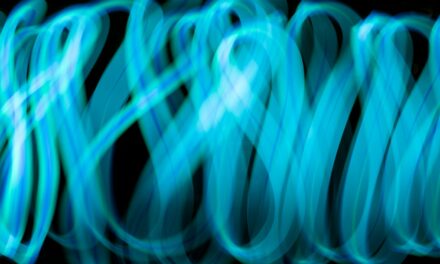In the realm of drawing and sketching, the pencil is an artist’s most fundamental tool. However, the effectiveness of this tool is significantly influenced by the sharpness of its point. A good pencil sharpener is essential for achieving precision and control in your work.
The act of sharpening a pencil may seem trivial, but it plays a crucial role in the overall quality of the artwork produced. A well-sharpened pencil allows for fine lines, intricate details, and smooth shading, all of which are vital for creating compelling visual narratives. Moreover, the choice of sharpener can affect not only the sharpness but also the longevity of the pencil itself.
High-quality sharpeners are designed to maintain the integrity of the pencil lead, preventing breakage and ensuring that artists can work uninterrupted. Investing in a reliable sharpener can save time and frustration, allowing artists to focus on their creative process rather than dealing with blunt or damaged pencils. Thus, understanding the importance of a good pencil sharpener is fundamental for anyone serious about their artistic practice.
Summary
- A good pencil sharpener is essential for achieving a fine point and maintaining the quality of your pencils.
- Tips and techniques for achieving a fine point include rotating the pencil while sharpening and using a gentle touch.
- Exploring different sharpening styles can create unique effects such as a chisel point or a rounded tip.
- Choosing the right pencil for the job is important, as different pencils may require different sharpening techniques.
- Maintaining your pencil sharpener is crucial for optimal performance and to prevent common sharpening issues.
Achieving a Fine Point: Tips and Techniques
To achieve a fine point on your pencil, several techniques can be employed, each contributing to the precision required for detailed work. One effective method is to use a manual sharpener that allows for greater control over the sharpening process. By rotating the pencil slowly and steadily, artists can create a long, tapered point that is ideal for fine lines.
This technique not only sharpens the lead but also preserves the wood casing, reducing the risk of splintering or breaking. Another technique involves using sandpaper or a craft knife to refine the point further after initial sharpening. This method allows for a more customised point shape, which can be particularly useful for artists who require specific line qualities in their work.
By carefully sanding or whittling the lead to a fine tip, artists can achieve varying degrees of sharpness and texture, enabling them to create diverse effects in their drawings. Experimenting with these techniques can lead to a deeper understanding of how pencil points influence line quality and overall artistic expression.
Unique Effects: Exploring Different Sharpening Styles
The way a pencil is sharpened can yield unique effects that enhance an artist’s work. For instance, a blunt point can produce softer lines and broader strokes, which may be desirable for certain styles or techniques such as shading or blending. Conversely, a finely sharpened point allows for intricate details and precise lines, making it essential for detailed illustrations or technical drawings.
Understanding these different sharpening styles enables artists to manipulate their tools to achieve specific visual outcomes. Additionally, some artists may choose to experiment with unconventional sharpening methods to create distinctive effects.
This approach can be particularly effective in mixed media works where contrast between smooth and rough lines enhances the overall composition. By exploring various sharpening styles, artists can expand their creative toolkit and discover new ways to express their artistic vision.
Choosing the Right Pencil for the Job
Selecting the appropriate pencil for a specific task is as crucial as having a good sharpener. Pencils come in various grades, each offering different levels of hardness and darkness. For instance, H pencils are harder and produce lighter marks, while B pencils are softer and yield darker lines.
Understanding these differences allows artists to choose the right pencil based on their desired outcome. For detailed work requiring precision, an H or F pencil may be ideal, whereas B pencils are better suited for shading and expressive strokes. Furthermore, the type of lead used in pencils can also influence the drawing experience.
Graphite pencils are popular among artists for their versatility, but coloured pencils offer an entirely different palette and texture. Artists should consider not only the hardness of the lead but also the type of pencil that best suits their style and medium. By carefully selecting pencils based on their specific needs, artists can enhance their ability to convey emotion and detail in their work.
Maintaining Your Pencil Sharpener for Optimal Performance
To ensure that your pencil sharpener continues to perform at its best, regular maintenance is essential. Over time, sharpeners can accumulate shavings and debris that may hinder their functionality.
For manual sharpeners, this may involve simply emptying the shavings compartment; for electric sharpeners, it may require disassembling parts to remove any trapped debris. Additionally, checking the blades of your sharpener is crucial for maintaining optimal performance. Dull blades can lead to uneven sharpening and may damage your pencils.
If you notice that your sharpener is not producing a fine point as it once did, it may be time to replace or sharpen the blades if possible. By taking these simple steps to maintain your sharpener, you can prolong its lifespan and ensure that it continues to meet your artistic needs effectively.
Troubleshooting Common Sharpening Issues
Lead Breakage: A Frustrating Problem
One frequent problem is lead breakage during sharpening, which can be frustrating and wasteful. This often occurs when too much pressure is applied or when using a low-quality sharpener.
Resolving Uneven Sharpening
Another common issue is uneven sharpening, which can result in an awkwardly shaped point that does not serve its purpose effectively. This problem can often be resolved by ensuring that the pencil is inserted correctly into the sharpener and by rotating it evenly during the sharpening process.
Troubleshooting for Consistency
If unevenness persists, it may be worth experimenting with different sharpeners or techniques until you find one that produces consistent results. By troubleshooting these common issues, artists can maintain their focus on creativity rather than technical difficulties.
The debate between hand sharpening and using electric sharpeners has long been a topic of discussion among artists. Hand sharpening offers a level of control that many artists appreciate; it allows for precise adjustments and customisation of the pencil point according to individual preferences. The tactile experience of manually sharpening a pencil can also be meditative, fostering a deeper connection between the artist and their tools.
On the other hand, electric sharpeners provide convenience and speed, making them an attractive option for those who require quick results or work with multiple pencils simultaneously. However, they may lack the finesse that hand sharpening offers, sometimes resulting in overly blunt or uneven points. Ultimately, the choice between traditional and electric sharpeners comes down to personal preference and artistic style.
Many artists find value in incorporating both methods into their practice, using hand sharpeners for detailed work while relying on electric ones for efficiency during larger projects.
Exploring Specialized Sharpening Tools and Accessories
In addition to standard sharpeners, there exists a range of specialised tools and accessories designed to enhance the sharpening experience further. For instance, precision sharpeners are available that allow artists to create extremely fine points tailored for intricate work such as detailed illustrations or technical drawings. These tools often feature adjustable settings that enable users to customise the angle and length of the point.
Moreover, some artists may benefit from using additional accessories such as lead holders or mechanical pencils that eliminate the need for traditional sharpening altogether. These tools provide consistent line quality without the hassle of sharpening while allowing for easy lead replacement when needed. By exploring these specialised tools and accessories, artists can expand their repertoire and discover new ways to enhance their drawing experience.
In conclusion, understanding the nuances of pencil sharpening is essential for any artist seeking to refine their craft. From selecting the right sharpener to mastering various techniques and exploring specialised tools, each aspect contributes significantly to achieving artistic excellence. By investing time in honing these skills and maintaining their tools, artists can ensure that they are always prepared to bring their creative visions to life with precision and clarity.
If you are interested in exploring the world of art beyond pencil sharpening techniques, you may want to read An Introduction to the San Francisco Museum of Modern Art (SFMOMA), San Francisco, USA. This article provides a fascinating insight into the renowned museum’s collection and exhibitions, offering a different perspective on creativity and artistic expression. It’s a great way to broaden your artistic horizons and discover new forms of inspiration.


